#69: Sixty-Nine, Dudes!
Okay, wait, if you guys are really us, what number are we thinking of?
It’s the weekend of the San Diego Comic Convention, an event that I used to go to every year without fail, but which I’ve not attended since 2015. Even then, some years ago, it had ballooned into a spectacle that simply engulfed downtown San Diego, turning it into a reflection of geek culture, both positive and negative. SDCC was always inevitably a good time, but it’s also become a bit of a chore—you need to be committed to attending SDCC, there are no tourists here any longer. Anyway, for those who have been in attendance, I hope you’ve been enjoying yourself as well as behaving and according yourself in a manner that speaks well for our shared hobby. And if you haven’t, know that you’re not the only one who isn’t there, and that in only a few more hours once this Newsletter goes live, the whole thing will have wrapped up and nobody will be talking about it or thinking about it until it’s time to begin prepping for next year.
So this week’s weird realization is that Marvel is going to be putting out a Fascimile Edition of a comic book that I edited, which seems a bit strange. Even stranger, the book is less than ten years old. I mean, I could sort of understand if it was an issue of DEATHLOK or NEW WARRIORS or something from my early days. Facsimile Editions feel like they should be for more unattainable comic books. And yet, here we are. The popularity and significance of Kamala Khan, Ms. Marvel, has grown to the point where we’re going to be putting out a Facsimile Edition of her first published appearance in ALL-NEW MARVEL NOW POINT ONE #1. Weird, but perfectly fine with me. Especially because it also includes the pilot story that Dan Slott and Mike and Laura Allred did for our SILVER SURFER series, which is one of the best beloved projects that I’ve worked on over the years. So if this gives some new readers a chance to become aware of that series and maybe track down the Omnibus or the collected editions, I’m extra all for it.
So, questions time! And we’ll begin this time not with a question but a bit of history from WORLD’S FINEST writer Mark Waid:
As regards people in comics being fed false info to avoid spoilers. In 1987, when I was on-staff, there was an inker at DC who'll go unnamed. He was so enraptured by Watchmen that he begged and pleaded for his editor, Andy Helfer, to send him the newest pages as they came in lettered and inked so he could get an advance look (he wasn't NY-based). He was relentless. He would ask nearly every day if anything new had come in, and it only got more annoying as the creators began to lag in delivery for those last few months (no one remembers that it took 12 issues of Watchmen 15 months to come out). Ultimately exasperated and fearful the inker might accidentally spoil the finale for others (the guy had a LOT of friends), Andy had production mock up a handful of completely fake pages for issue 12 using altered existing art and new dialogue. I was on-staff and saw them for myself; alas, all I remember was that they were extra-bizarre and borderline nonsensical just to rattle the recipient and make him look like a crazy person if he spoiled stuff. And, yes, I'd sell my soul to still have copies of those pages, and no, I have no idea how one would procure them these days.
Appreciate you sharing this bit of forgotten comics chicanery, Mark! And I certainly remember WATCHMEN having taken 15 months (or more) to come out—I can specifically recall the long wait between when #11 dropped and when #12 eventually made it to the stands. And I understand that my perspective on it isn’t viable today, when everybody that encounters WATCHMEN does so in its collected form, but I’ve long held the belief that the best way to have experienced WATCHMEN was with those gaps in-between issues. The amount of serious analysis my friend group of fans at the time put into it was pretty remarkable.
Jimmy Callaway
Was there any specific reason you can share why Michael Chabon didn't wanna do FF? And do you have any other wishlist writers like him or Lethem, literary types you'd like to see in the ol' bullpen?
Michael did want to write FANTASTIC FOUR, Jimmy. The difficulty came when negotiating the specifics of the contract. Michael and his representation wanted some contractual assurances that should any of his work be used as the basis for a FANTASTIC FOUR movie that he’d be recompensed and involved in some capacity. This was well before Marvel was making its own movies (and before the three FANTASTIC FOUR films that have since been attempted) and so we simply weren’t in a position where we could guarantee that. And so the whole deal fell apart.
JV
I checked out Moon Knight 25 last week (Miller cover) and loved it. Ill be checking out back issues of this run (really enjoyed the deep cut villains as well).
What I really enjoyed is that it had a pulpy action and fast paced feel. Intelligent action that I feel has been missing from a lot of comics these days. Action/adventure done in a propulsive way. Any other similar series you can recommend?
I tend to feel like the current MOON KNIGHT is a special thing, JV. But you could perhaps give a look to Chip Zdarsky and Marco Checchetto’s DAREDEVIL as something that’s in the same neighborhood. You might also try Chip’s BATMAN, except that it’s published by DC and I’m told those comic books are bad. I also think that any of the Ed Brubaker and Sean Phillips graphic novels might fit the bill for you. They’re not really super hero stories, but the RECKLESS series has the same kind of book-to-book continuity and world-building that the best super hero comics have.
Matt Fraction
look i don't wanna note Robert to death but surely it's gotta be "hats ON to you" right?
I don’t know, Matt—but we can try it on for size and see how it fits.
Richard Melendez
How about, "Hats all, folks!"
Look, now you’re just being silly…
Jeff Ryan
You've mentioned how much you loved the 100-Page Monster comics, with lots of reprints for very little additional money, and that the buying public felt otherwise. Are there other trends where your heart and John Q Public disagree? "Boy, for some reason people like Captain America over Captain Ultra: Captain Ultra has so many more colors in his costume!"
There are probably quite a few, Jeff, though none that really strike me right this moment. While it’s always sad when something that you try doesn’t work, I tend to simply put it aside and move on to the next thing—the next series, the next idea. And given enough time, I might have a chance to try it again, even if it’s not in the same way. As an editor, it’s not my job to make people like a certain thing, but rather I have to respond to the feedback that the audience gives me with their dollars and their feet to produce work that they (and you) are going to care about and become invested in. But, you know, I liked Treasury Editions, but that format is simply too expensive to go out with these days. (When the regular comics were twenty cents, they cost a dollar at minimum. Now do the math for scale.)
Nick Mercurio
Tom, it seems to me from the outside looking in that you can go one of two ways as a Marvel editor: toward the “Marvel heroes” (the Avengers, etc.), or the X-Men. Is that true to any extent? If so, do you recall when you made “the choice”? Did you? And do you have an idea of what YOUR X-Men book would be? At least before the Krakoan age? Or even now?
I don’t really think it’s as simple as all that, Nick. For one thing, there are definitely other camps than just Avengers or X-Men. Spider-Man is a big one, as are licensed properties such as the Star Wars titles. And people do bounce around. Nick Lowe, who has been the Spidey editor for many years was working on X-Men titles before that. And Jordan White, the current X-Men editor, did much of his work before that on Star Wars books. And that’s to say nothing of people like Wil Moss, who worked on characters such as Superman and the Flash, whoever they are, before taking on Thor and the Hulk. In terms of what my X-MEN book might look like, I think there are multiple answers to that. As a reader, I came in on the Chris Claremont/Dave Cockrum/John Byrne era, so that’s always the X-Men material that speaks the most directly to me. But I’m also well aware that there have been forty years of stories since then, with the introduction and inclusions of many, many characters into that line since then. So I don’t think I’d be simply trying to re-create the feel and flavor of that old run, not as the only thing at least. I did spend an hour or so one day recently bouncing ideas around with Jordan White as a springboard as he began to work out his future plans for the X-Titles, and that implied some notions as to how I might go about structuring that line of books myself if I were ever to take it over. Not that I’m going to reveal any of that here. And honestly, if such a thing happened, by the time that it did, the ball would be elsewhere on the playing field and I’d need to begin my thinking from scratch again.
Chris Sutcliffe
As a comic historian, I'm hoping you could help. At the end of Iron Man 214 and Spectacular Spider-Man 126 (from around 1986/87), Marvel teases a Spider-Woman series starring Julia Carpenter, written by Danny Fingeroth and drawn by Keith Pollard.
As far as I can see, this series never happened (there is a later series in 1993 written by other people), but I can find no mention of it existing beyond the teases in those pages.
Do you have any idea what may have happened in this case?
I don’t know any of the specifics of what happened there, Chris. But Danny Fingeroth likely does, so perhaps he’ll enlighten us if he’s so inclined. But it wasn’t unusual in those days for projects to be started and then to stall out for one reason or another—some of them never to be picked up again. And I think this SPIDER-WOMAN project was one of them. Others, such as NICK FURY VS S.H.I.E.L.D. would take years to reach fruition and would see the light of day in a very different form than when they were first conceived. I seem to think that Danny may have repurposed some of his ideas that would have been a part of that project into some other story somewhere, but I don’t remember any of the details.
Behind the Curtain
Here’s an interesting artifact: Dave Cockrum’s initial design drawing of Lilandra Neramani, done before she even really was Lilandra.
Dave was constantly coming up with characters and designs in a big sketchbook that he carried around with him. When it was time to create the All-New, All-Different X-Men, he and writer Len Wein went through Dave’s mountain of sketches and mixed-and-matched designs and character traits to come up with much of the new team. In the case of Lilandra, as I heard it from Chris, he came into the office one day, where Dave had a desk where he was doing cover designs and the like. And Dave had posted this drawing on the wall behind him. And Chris went immediately nuts for it, wanting to know who she was and what her deal was, and saying that they had to use her in X-MEN. Dave had the character’s name already—her full name, Lilandra Neramani, was apparently an anagram of the names of two ladies that Cockrum had pursued in the past. And from this simple drawing came the whole of the “Xavier’s Nightmare” storyline that wended through X-MEN #97-108 and just past the end of Dave’s tenure on the series. Everything involving the Shi’ar can be tracked back to this one drawing. And that’s definitely a logo in alien writing at the lower right, though what it’s meant to be saying I cannot decipher—Dave had some name or identity for this concept when it was intended as its own thing.
Pimp My Wednesday
We’re back to having a big release week after a couple of smaller ones.
AVENGERS #3 starts the book’s “CITYSLAYERS” arc which introduces the villainy of the extradimensional Ashen Combine and their floating headquarters, the Impossible City. It’s written by Jed MacKay and illustrated by C.F. Villa, with a knockout cover by Stuart Immonen. We were very deliberate in our first two issues, but this is where the foot really comes off of the brakes.
And delayed from last week thanks to some shipping difficulties, this Wednesday also sees the final issue of AVENGERS BEYOND, the successor title to ALL-OUT AVENGERS dedicated to action-heavy adventures that the audience would be dropped into the middle of. This one wraps up the underlying plotline featuring the Beyonder, and was of course written by Derek Landy and illustrated by Greg Land.
Also finishing this week is the 60th Anniversary series I AM IRON MAN, delivered by the team of Murewa Ayodele and Dotun Akande. After four adventures set during the past, this final issue happens in the here-and-now and throws off more wild ideas per page than most of you may be ready for. The love that Murewa and Dotun have for the character has come through in every page of this series.
As if that wasn’t enough, Annalise Bissa has put together the second issue of DAREDEVIL & ECHO #2 by Taboo, B. Earl and Phil Noto. It sees the sightless crusader and the deaf warrior getting involved in a mystery surrounding a local Church—a mystery that both of their ancestors had been involved in decades before.
And busy Martin Biro also put together two releases for this week. The first is this final issue of COSMIC GHOST RIDER as produced by Stephanie Phillips and Guiu Vilanova in which the mystery of the multiple Cosmic Ghost Riders is finally brought to light.
Martin also shepherded this final issue of the HELLCAT limited series, in which Christopher Cantwell and Alex Lins crafted a bizarre mash-up of noir, the supernatural, a murder mystery and slice-of-life comics into a flavorful stew. In addition to Patsy Walker herself, this issue also includes meaningful roles for Sleepwalker and Daimon Hellstrom. What other comic can promise you that?
And since I just happen to have it handy, the HELLCAT #5 cover that you see above is a homage to an earlier piece, one done by the late Carlos Pacheco and Jesus Merino for AVENGERS FOREVER #8 circa 1999. As it turns out, I did the quickie sketch for that cover, and it’s equally applicable to this one as a result. So here it is. You can see why I stopped being an artist.
Finally, in the world of vertical scrolling, AVENGERS UNLIMITED wraps up the three-part adventure uniting Simon Williams, Wonder Man with the Black Widow. It’s a killer climax by Sean Kelly McKeever and David Baldeon!
A Comic Book On Sale 70 Years Ago Today, July 23, 1953
Another good example of the oeuvre of EC Comics in the 1950s, who were the finest comic book publisher of their age. it was the horror comics such as this one where EC made its real money. Many of its other titles devoted to science fiction or war or crime would occasionally struggle to break even—but the horror books kept the dollars coming in. Which is perhaps why I find it so astonishing to see this cover. Typically, the horror comics publishers of this period would feature images as lurid and grotesque as they felt they could get away with, and EC was no exception to that trend. But here, the horror isn’t visceral at all, it’s all intellectual, all internal. You might have to look at this cover for a moment or two before its message really wormed its way into your brain. But I love it for being so unabashedly understated. As was the company’s pattern, this issue of VAULT OF HORROR, #33, featured four stories, each one drawn by a different artist, all four of them written by editor Al Feldstein (with some initial input from publisher Bill Gaines, who would often come in with springboards for stories based on whatever he’d read that night.) Feldstein would write his copy directly onto the boards, breaking down the story broadly as he did so, and then it was up to each individual artist to visualize it as they saw fit. The level of craft in the EC books was very high, and the artists were all competitive, looking to wow one another with their efforts and to not be the weak link in a given issue. So this time, your dime got you an opening story dawn by Reed Crandall in which a secretary and her boss’s lawyer contrive to inherit his money by getting him to kill himself. They are successful, but he dead man returns to make sure they don’t enjoy their ill-gotten gains. The second story, illustrated by Jack Davis, involved a group of local kids who are interested in death and capital punishment, and who bury one of the other neighborhood children alive for their infractions. The third tale was the work of George Evans, and concerned a series of killings in a small town that a doctor and the local Sheriff attempt to solve, only for the doctor to learn that the Sheriff himself is a deformed creature who has been preying upon the townsfolk. The final story was drawn by Graham Ingels, and was about a renowned puppeteer who hit hard times and whose wife was only interested in him for his money. After the puppeteer drops dead of a heart attack, his wife’s body is found alongside his, killed by his vengeful puppets. These stories all sound pretty basic and dopey by modern standards, but they were incredibly literate for the period. EC legitimately attempted to raise the level of content in comic books, but in the conformist 1950s, they were operating too far outside of the norm to be permitted by society to survive.
A Comic I Worked On That Came Out On This Date
Now here’s an issue that I remember for one specific reason: it’s the first issue of a comic book that I edited where, when the final book came in, I thought the end product was good. Mind you, I had only been editing DEATHLOK directly for three issues, so there’s maybe some hubris involved here. But I was genuinely happy with the results here. I’ve spoken in the past about how I inherited the DEATHLOK title and the strange splitting-of-the-baby that resulted in me having two writers who alternated story arc—which wasn’t the best way to go about things. But as it featured an African-American lead character, this series was of greater personal import to Dwayne McDuffie and Denys Cowan, who worked together on this opening arc. Dwyane titled it “The Souls of Cyber-Folk” after the book by W.E.B. DuBois, but neither I nor my boss Bob Budiansky were familiar with the tome in question, a seminal work about the Black experience, and so Bob tried to change it to the more straightforward “Cyber-War”. But Dwayne was able to successfully argue him out of that alteration. The story involved the revelation that there was an underground network of characters all of whom were cyborgs, regardless of whether they were considered heroes or villains, who shared a commonality of experience that other people couldn’t relate to or understand. Deathlok is ushered into this community by Misty Knight when somebody is murdering the assorted cyborgs of the Marvel Universe. At the end of last issue, it turned out that the killer seemed to be Doctor Doom—so in this issue, Deathlok and Misty have to battle the most dangerous villain there is. Fortunately for them, this isn’t actually Doom at all. Rather it’s one of his Doombots who has gained sentience and has christened itself Mechadoom. And by the end of the issue, Mechadoom has crashed Deathlok’s cyborg systems, leaving him helpless and unable to move before the crazed mech-being. There was some beautiful art done here by Denys and inker Mike Manley, who added a nice texture and grit to Denys’ forms. In the end, while trying to treat with everybody fairly, I wound up inadvertently screwing the both of them. chalk it up to inexperience, but that’s hardly an excuse. Anyway, the other thing that I remember about this issue is the fact that I had to fight for this cover. There was some concern about the fact that the word DOOM was larger than the DEATHLOK logo. Apparently, there was believed to be some regulation in the second class postage rules that prohibited a magazine from displaying any copy larger than its logo. This sounded like nonsense to me then and it does now as well. I was able to get away with it, though, by convincing whoever it was who had the objection that since the DOOM was transparent and the face of the letters was the same color as the background, it wasn’t actually more prominent than the logo. That argument worked, as you see above. It’s kind of a shame that I was so ill-equipped to deal with overseeing a book in these early years, as I really liked the Michael Collins Deathlok and the set-up for his series. But I definitely mismanaged it to an early grave. (Not too early, though—the book ran for 34 issues. But in the early 1990s, that wasn’t a stellar run.) This issue was released on July 23, 1991.
Monofocus
It’s mostly been a week of continuing with ongoing perennial series in terms of my viewing habits. So I’ve continued to enjoy STAR TREK: STRANGE NEW WORLDS even if this season isn’t quite as sharp and flawless as the first one was. I’ve become totally enamored of 19/20, which is suddenly like a whole different experience now that the kids have become adults and they’re drinking every night and able to date one another. I’ve also been liking MY ADVENTURES WITH SUPERMAN which feels like it very much channels the spirit and style of the Nate Stevenson SHE-RA reboot, which I adored. and I miss having new episodes of MOBILE SUIT GUNDAM: THE WITCH FROM MERCURY every Sunday now that the run has concluded, as I loved the whole thing. And I’ve got two episodes of FOUNDATION stacked up calling to me whenever I can get a second for them.
But I have ben experimenting with some other shows, too. At the recommendation of Marvel editors Alanna Smith and Darren Shan, I started watching MADOKA MAGICA on Hulu. On the surface, it’s a traditional sparkly magical girl anime, but there’s something off about it from the beginning, and the deeper into it you get, the darker and more twisted it all becomes. I’m only about 2/3 of the way through it, and the main character Madoka hasn’t even become a magical girl herself yet, but it’s a pretty great subversion of the genre. Definitely one to try out, though you’ll need to consume at least two or three episodes to get to the point where events begin to take a nasty turn. The less you know going into it, the better.
And inspired by the fact that the reunion series just dropped, I went back and watched the pilot episode of JUSTIFIED, a series that I missed when it premiered but that multiple people have told me good things about over the years. I’m not 100% sold on it from just the first episode, though I do intend to keep watching—part of the problem is that I’d seen a few of the key scenes in this episode earlier as YouTube clips and the like, so the best bits of it had already been inadvertently eaten. It’s based on a character and a story written by Elmore Leonard, but apparently goes its own way past a certain point.
I’ve also watched the first two parts of SUPERPOWERED, the MAX service’s new three-part documentary on the history of DC Comics. And it’s been all right so far. I’ve seen complaints that the show didn’t cover this moment or this event, but there’s only going to be so much history that any project like this can include, and taking it from a broad perspective, it appears to be relatively on point and thorough. There isn’t much that it can tell me that I didn’t already know, but it was cool to see some of the bits or archival footage that I’d never experienced before, such as Joe Shuster working on a page of Federal Men prior to Superman. I was also amazed to see how often Marvel is referenced, not simply verbally but also visually. They show a bunch of Marvel books and speak about it plainly in a way that isn’t typical for this sort of company retrospective. (They also cover Image in detail, but given that Jim Lee is their top man at the moment, I would think that would be relatively unavoidable.)
And I also took in the special SDCC-timed Amazon Prime drop of the INVINCIBLE: ATOM EVE origin episode. And it was good, but maybe just a little bit long for what it was. I liked the first season of the series a whole lot, particularly in how it juggled the events of the comics to make for a more cohesive season. And this one-off is well done. But I found that I was starting to get antsy when the fight sequence at the end seemed to just keep going on, and to no really great payoff. It wasn’t terrible or anything, but not my favorite installment by any means. Still, great to get a little appetizer to hold things over.
Posted at TomBrevoort.com
Yesterday, I wrote about the death of Gwen Stacy from where I read it first: in the pages of MARVEL TALES #98
And five years ago, I wrote about this Modern Comics reissue of the first issue of BLUE BEETLE.
And that means it’s time to wrap this thing up! So it’s Hats On To—wait, wait, that doesn’t really work at all, does it? Fraction, think you got it wrong this time, you’ve been outperformed by Kirkman. And that can’t possibly feel good.
Anyway, see you in seven! Hats all, folks!
Tom B

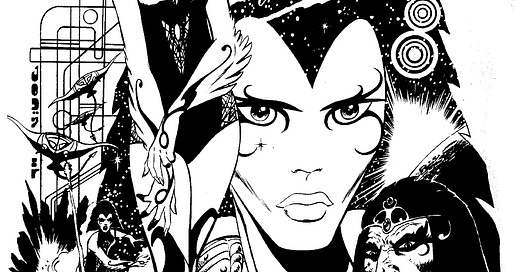



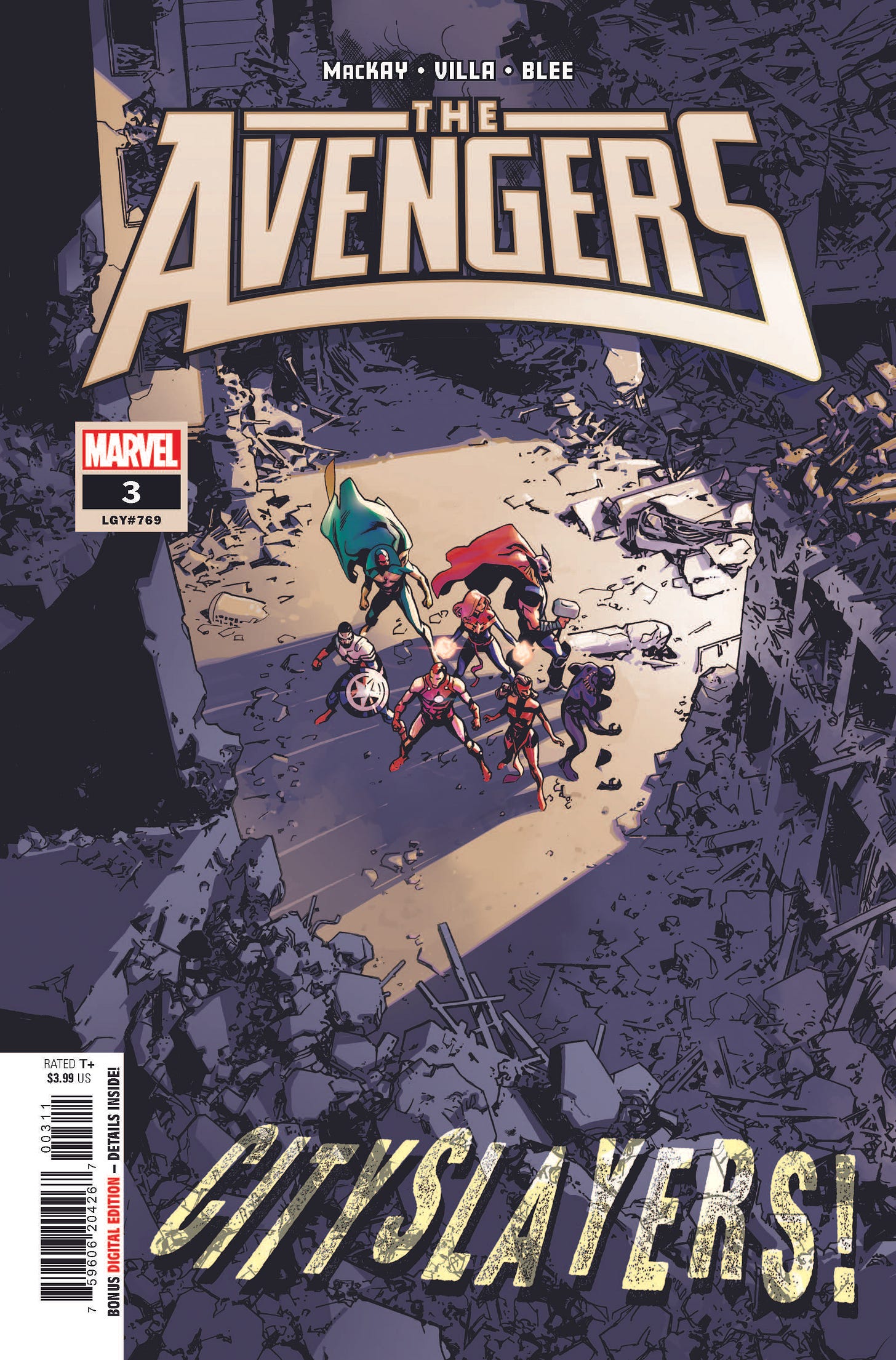

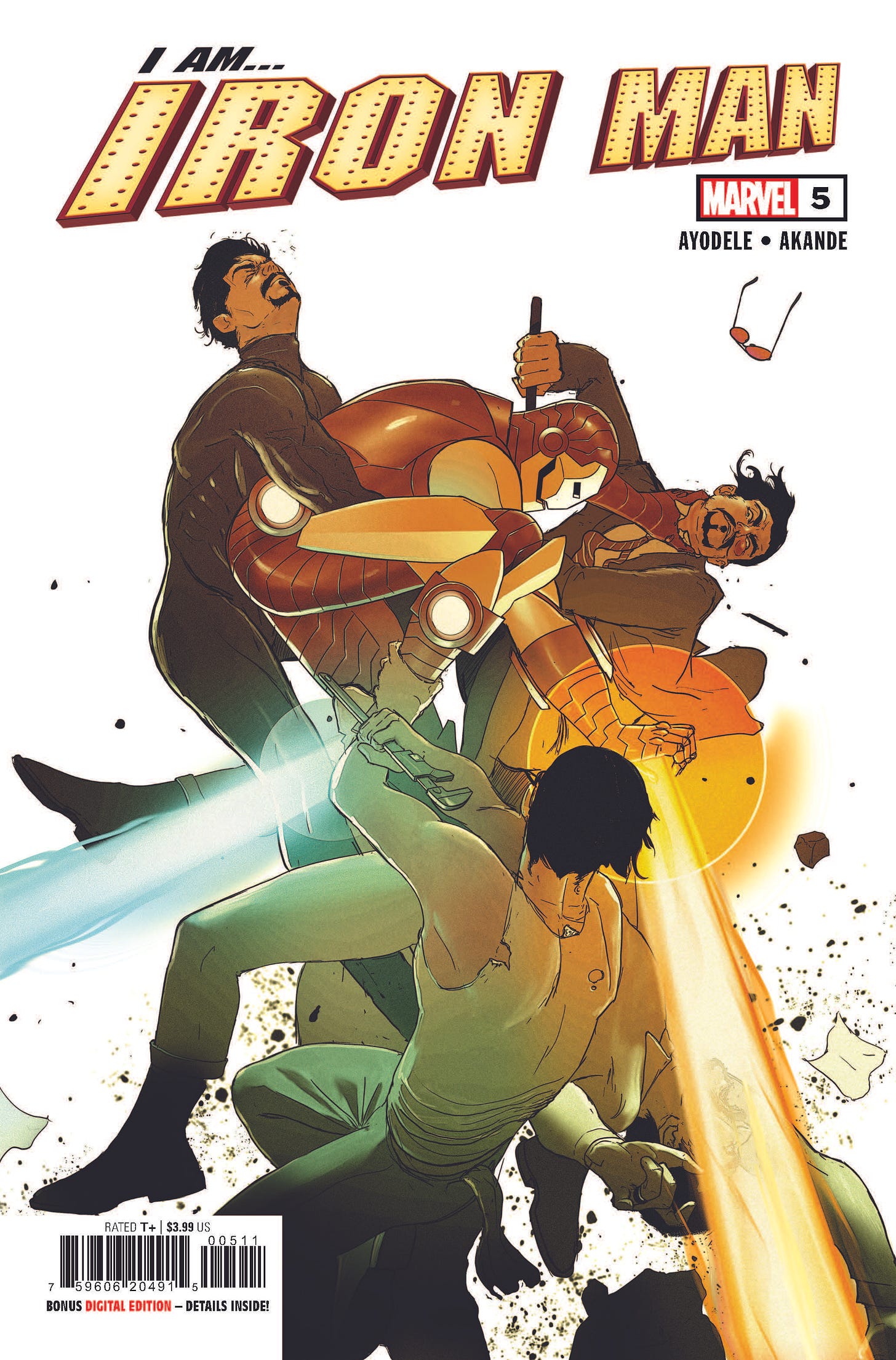
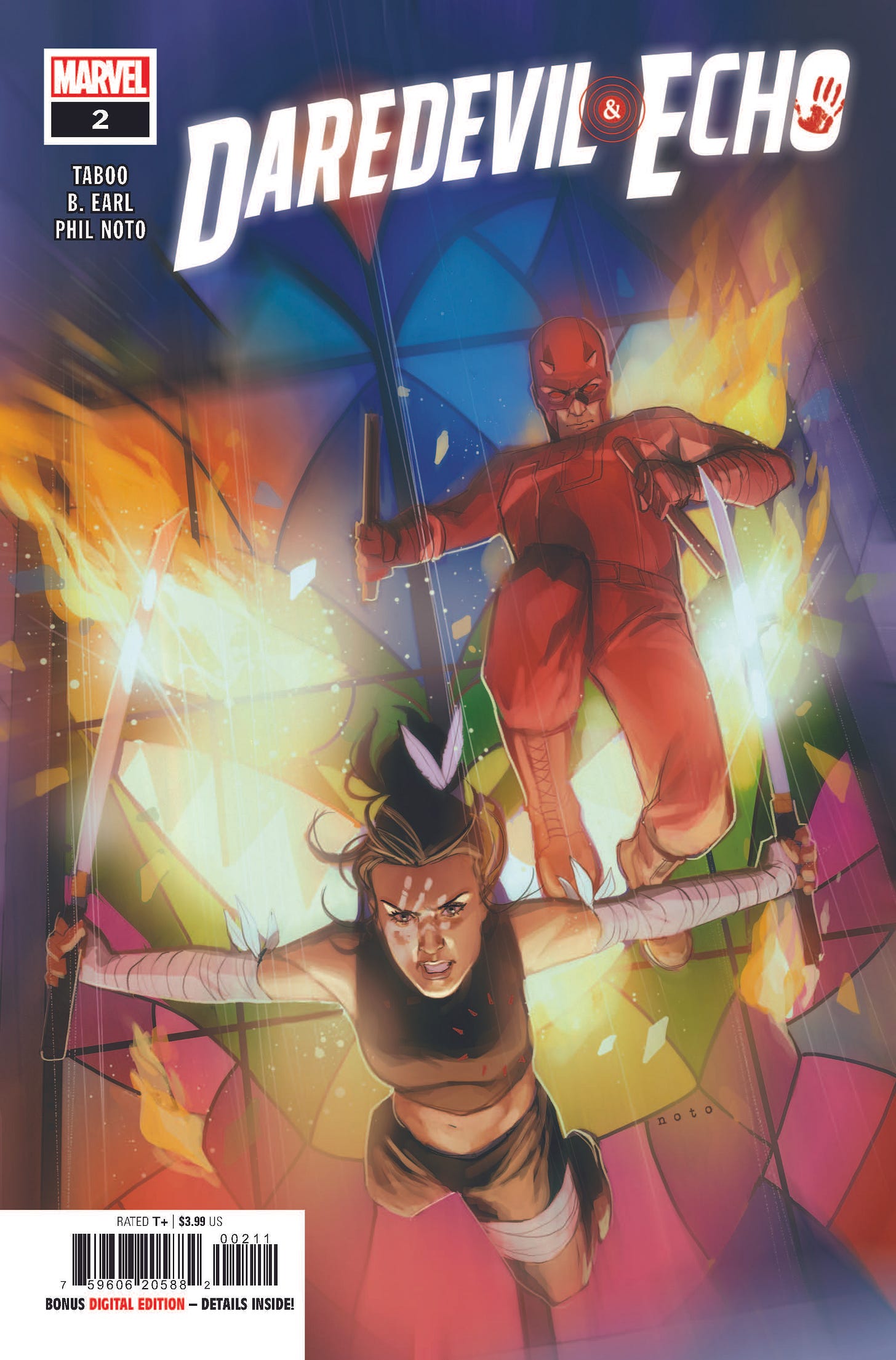
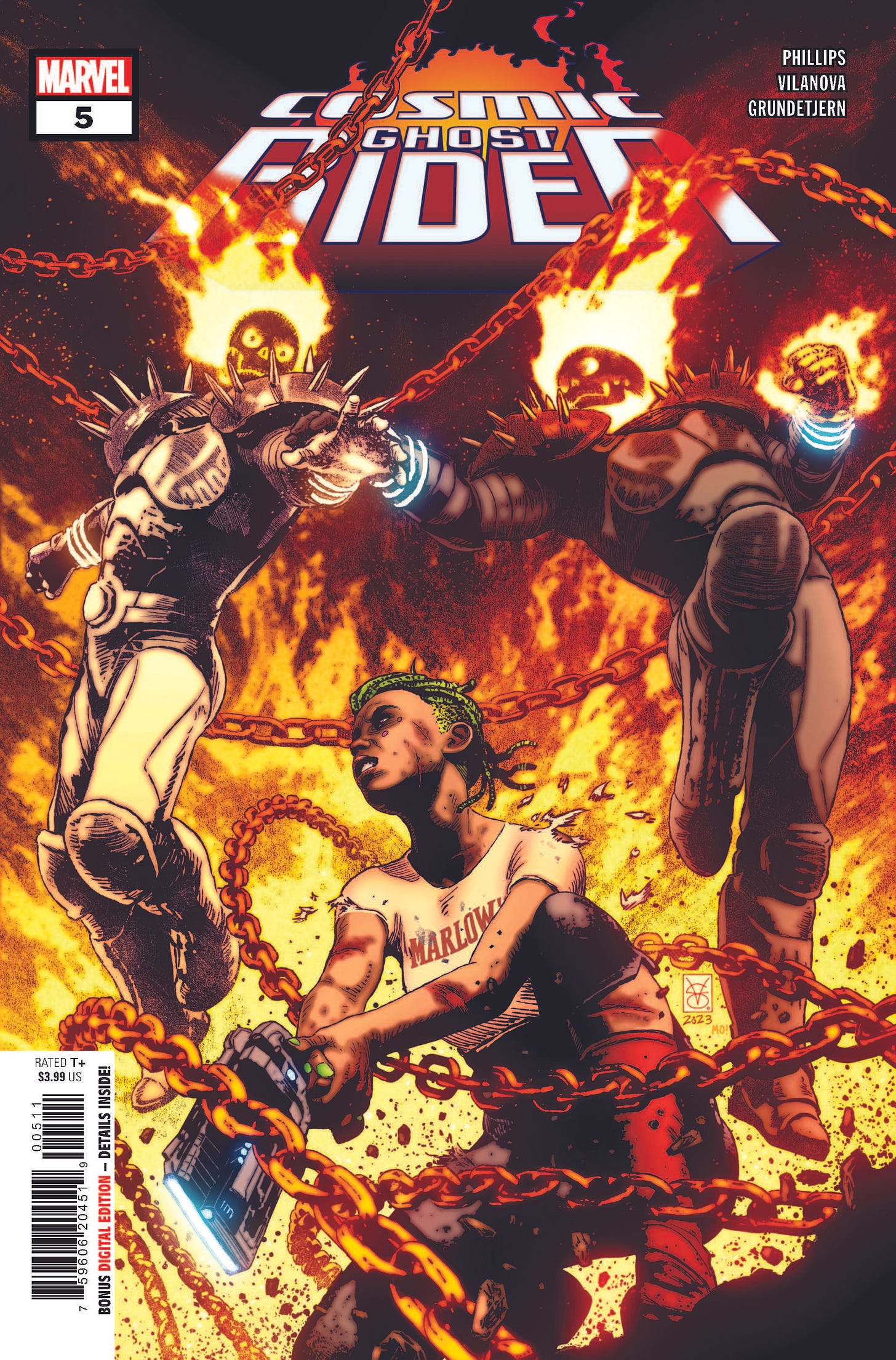
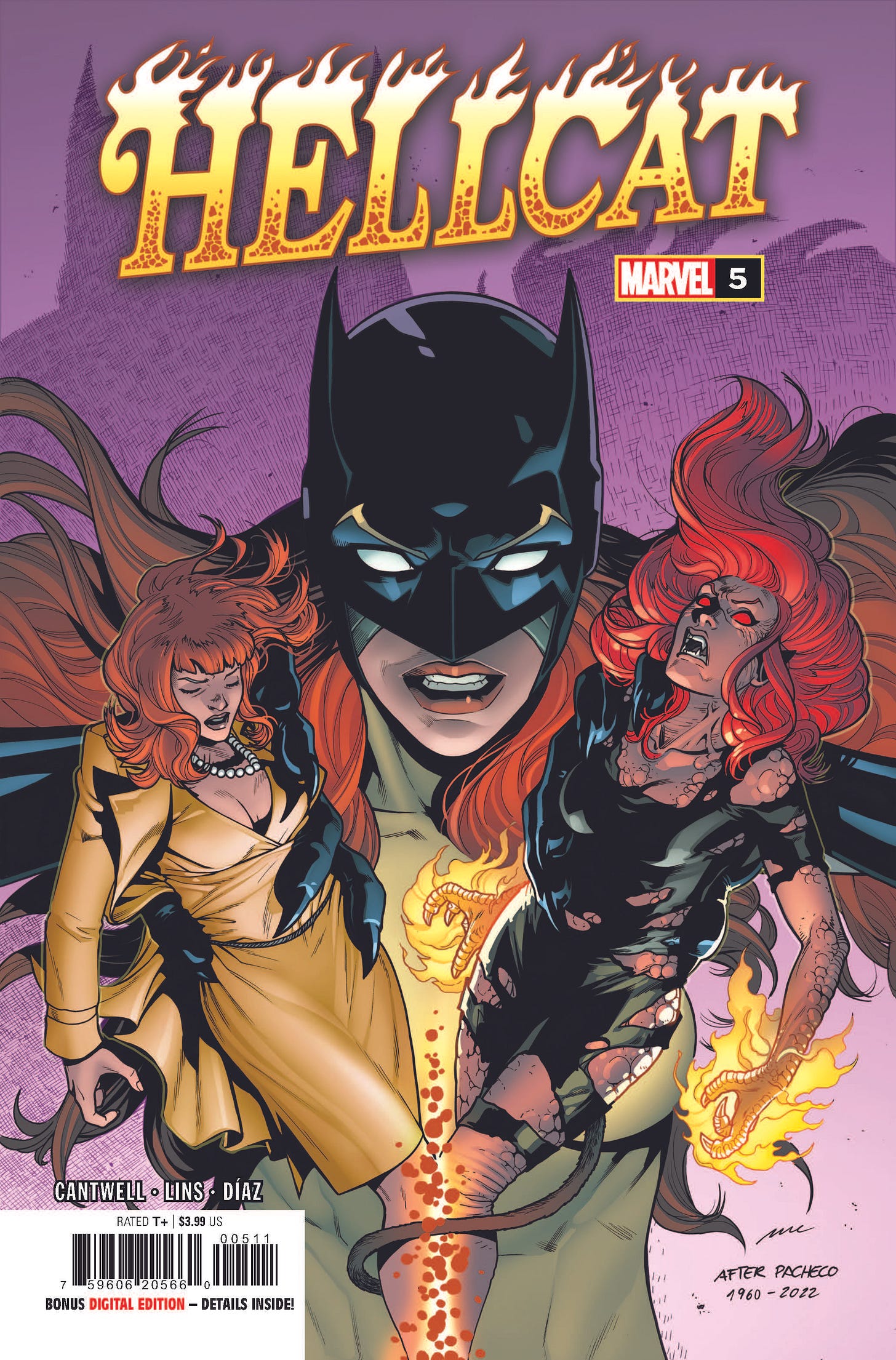
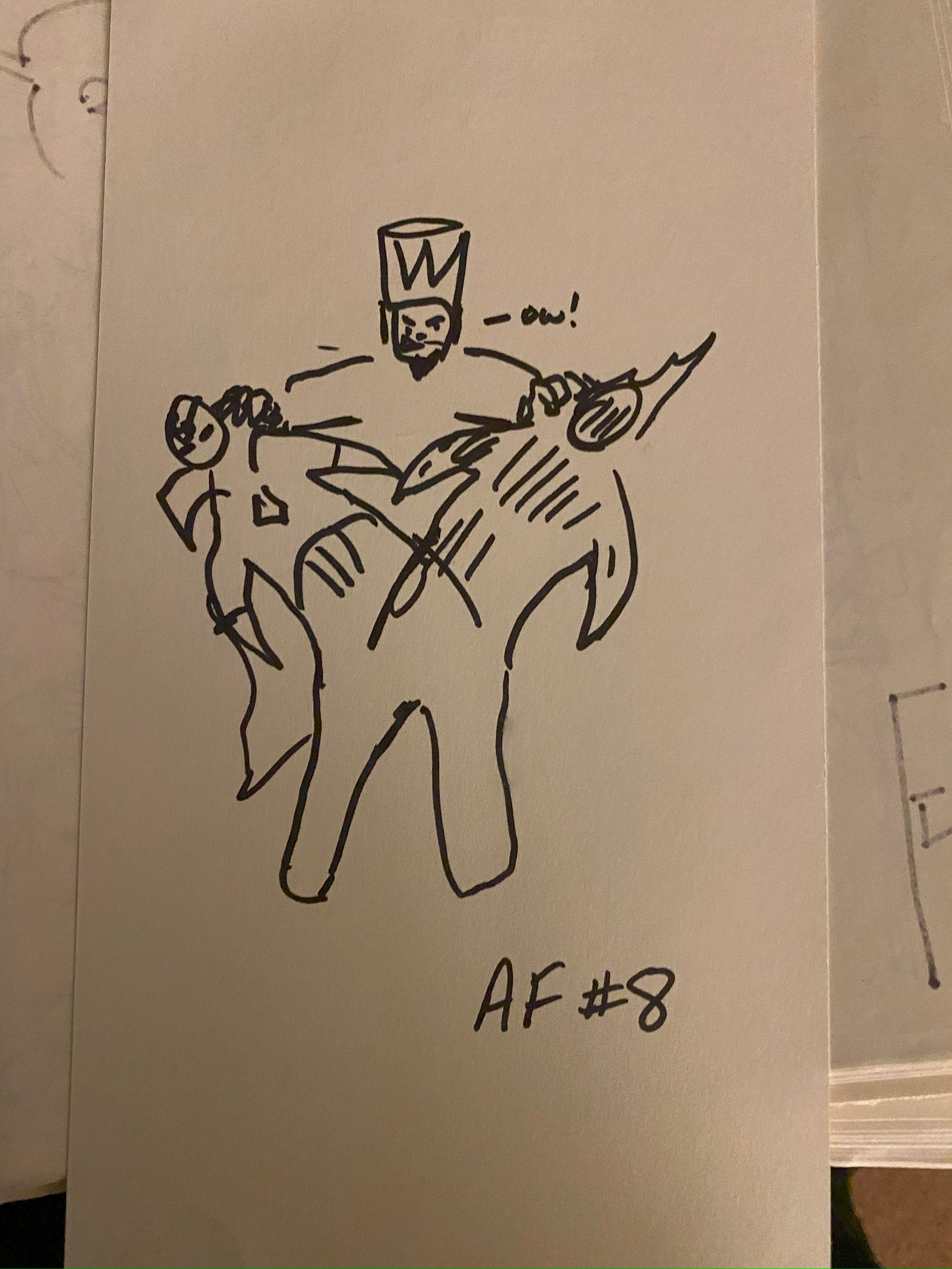
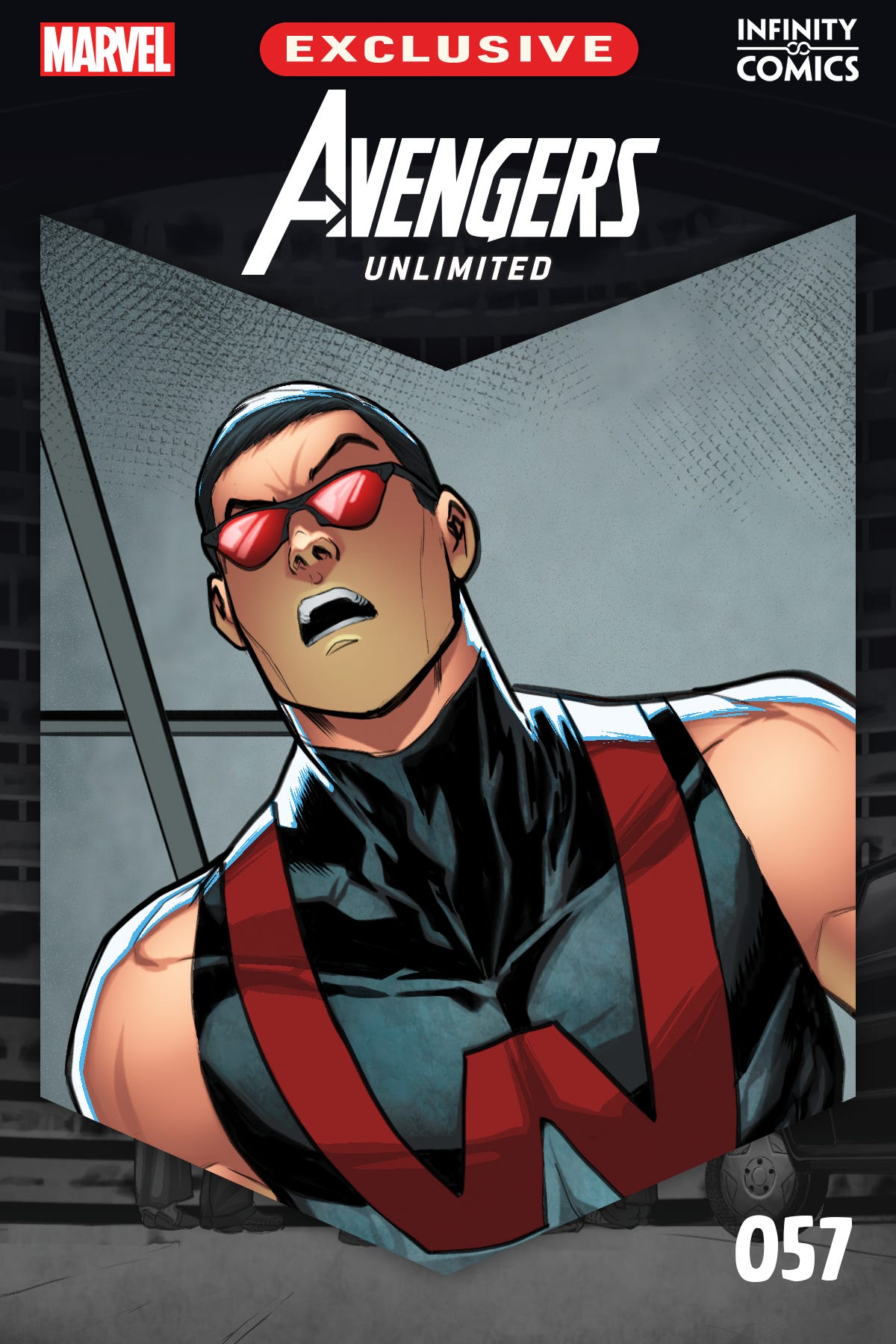
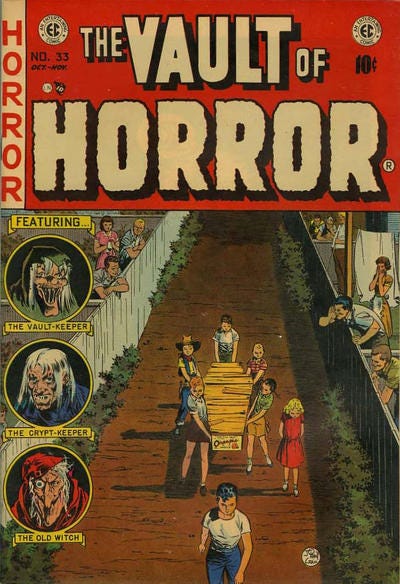
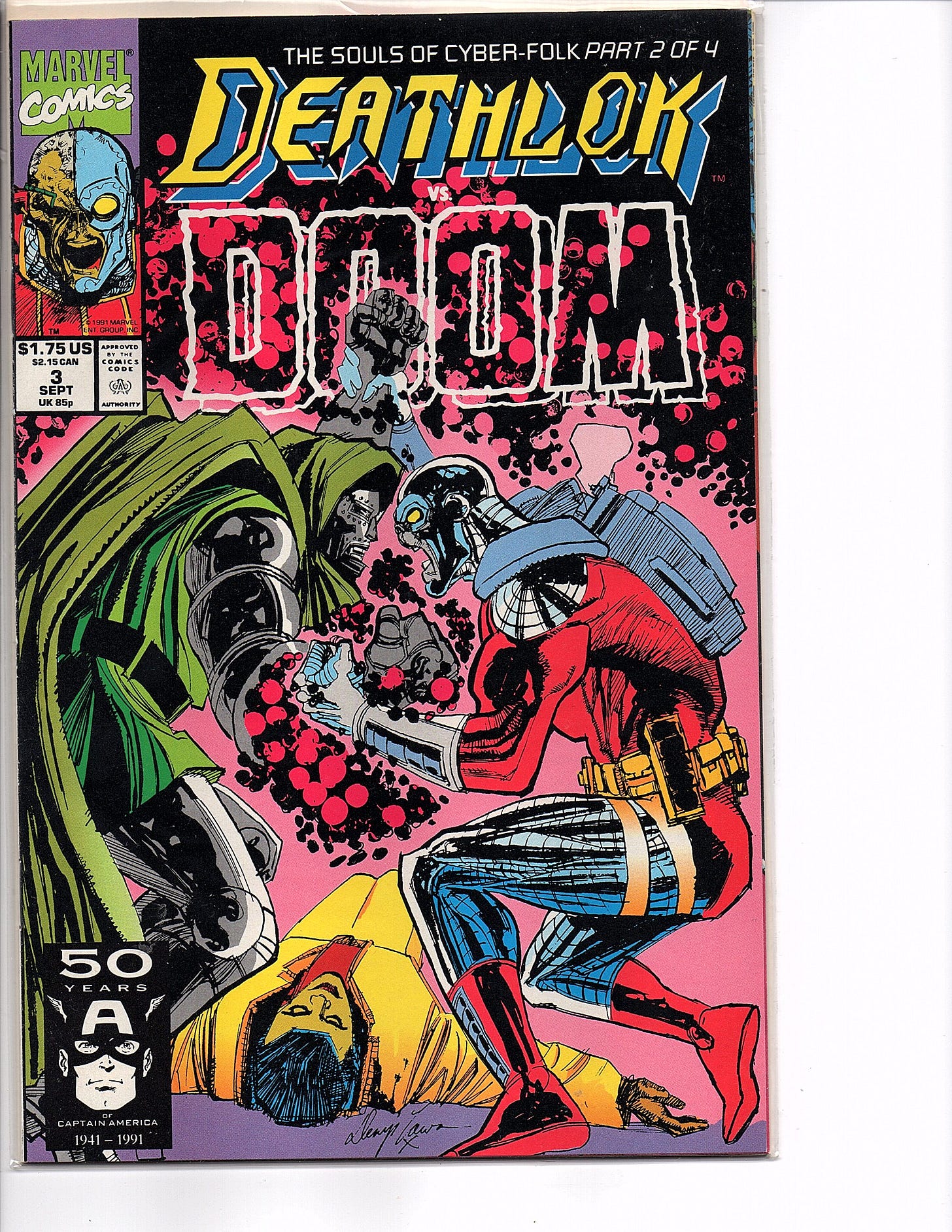
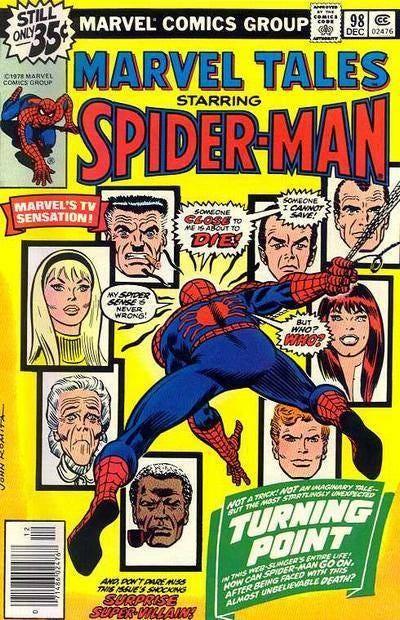
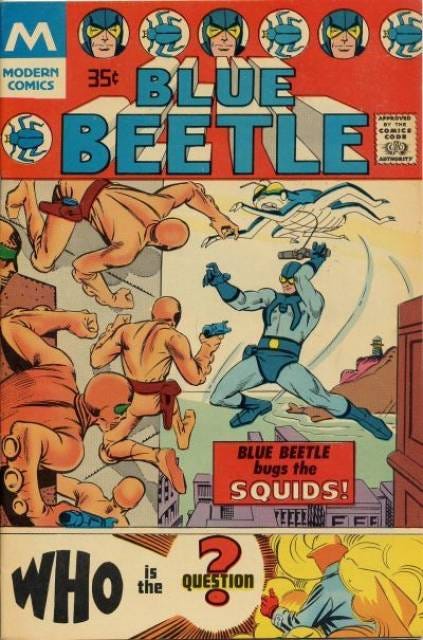
Thanks for the shout out, Tom! I'm really trying to get the word out more about this 'Batman' character
"Apparently, there was believed to be some regulation in the second class postage rules that prohibited a magazine from displaying any copy larger than its logo. This sounded like nonsense to me then and it does now as well."
Yeah, this kind of thought coming from anyone at the publisher of MARVEL TEAM-UP, JOURNEY INTO MYSTERY, SUPERNATURAL THRILLERS and MARVEL PREVIEW (to name only a few) does not really hold a lot of water.
kdb